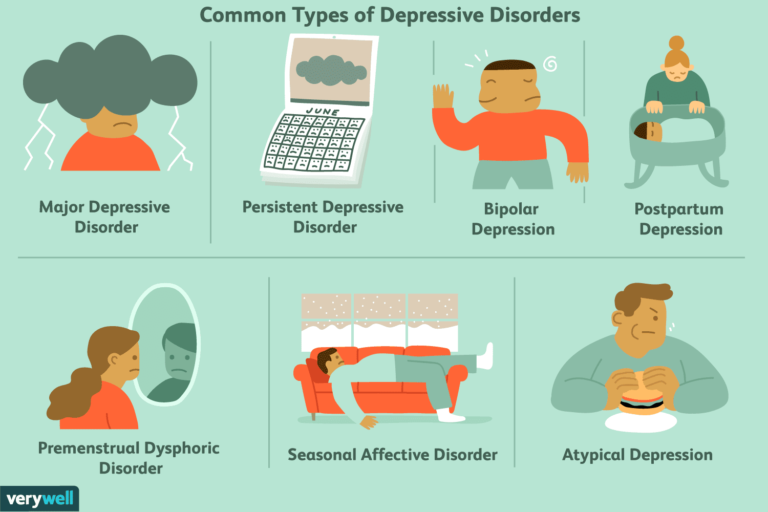
Major depressive disorder (MDD) is diagnosed when someone has at least five symptoms all day and nearly every day for at least two weeks. One of these symptoms needs to be a depressed mood or loss of interest in activities. However, for children and adolescents, the mood might be irritable instead.
The symptoms of MDD that are in the diagnostic criteria include:
Atypical depression is a specifier (depression with features that are not typical) added to the diagnosis of MDD. It is assigned when certain signs and symptoms are present a majority of the time during a major depressive episode. One of the features is mood reactivity, meaning someone’s mood brightens in response to positive events. Atypical depression also presents with at least two of the following features:
Persistent depressive disorder (PDD) is also known as dysthymia. It is characterized by a depressed mood that is present for most of the day, most days, for at least two years (or for one year in children and adolescents). They must have two or more specific symptoms in addition to the depressed mood. These are:
Perinatal depression is a mood disorder that occurs before or after a child’s birth.
Premenstrual dysphoric disorder (PMDD) is a condition characterized by severe irritability, lability (shifting moods), depression, or anxiety during the one to two weeks prior to the beginning of menstruation. The symptoms tend to resolve about two to three days after the period begins.
Irritability or anger
Sadness, feelings of despair, or thoughts of suicide
Tension or anxiety
Panic attacks
Mood swings
Loss of interest in daily activities
Difficulty thinking or focusing
Fatigue or low energy
Food cravings or binge eating
Difficulty sleeping
Feeling a loss of control
Cramps, bloating, breast tenderness, headaches, joint or muscle pain
During a depressive episode, an individual may experience the following symptoms:
Seasonal affective disorder (SAD) is a form of depression in which symptoms occur and recur seasonally. It is formally known as major depressive disorder with seasonal pattern. Symptoms include ones that may happen with major depressive disorder, but there are some that are specific to each pattern of SAD, whether occurring in winter or summer. For example, oversleeping (hypersomnia) is sometimes present in SAD occurring in the winter, while difficulty sleeping (insomnia) sometimes occurs in summer-pattern SAD.
